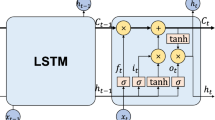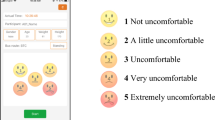Abstract
Driving behavior optimization can not only reduce energy consumption and the probability of traffic accidents but also improve the riding experience of passengers. Unfortunately, the low estimation accuracy resulting from the poor performance of prediction models greatly influences bus service performance. In this paper, a time cycle neural network, the long short-term memory (LSTM) network, is used to evaluate real-time bus riding comfort and provide driving suggestions. To ensure the prediction accuracy, a series of preprocessing procedures, such as data filtering, GPS data processing, parameter calculation and road segmentation, are performed. Three indicators, velocity, longitudinal acceleration, and yaw rate, are selected, while a critical zone-oriented training process is performed. Simulation results show that the proposed method has rapid convergence and acceptable prediction accuracy while providing driving suggestions is reasonable.
















Similar content being viewed by others
Explore related subjects
Discover the latest articles, news and stories from top researchers in related subjects.References
Bi S, Mei D, Liu Z, Wang P (2016) Research on lane change intention identification model for driving behavior warning. China Saf Sci J 26(2):91–95
Biglarbegian M, Melek W, Golnaraghi F (2008) A novel neuro-fuzzy controller to enhance the performance of vehicle semi-active suspension systems. Veh Syst Dyn 46(8):691–711
Chawathe SS (2007) Segment-based map matching. In: 2007 IEEE intelligent vehicles symposium, IEEE, pp 1190–1197
Chen C, Zhang J, Wang Y, Gai J (2019) Identification of dangerous driving behavior on stepwise regression analysis and bp\_adaboost multi-classification algorithm. Math Pract Theory 49(14):200–207
Chopra R, Roy SS (2020) End-to-end reinforcement learning for self-driving car. Advanced computing and intelligent engineering. Springer, Singapore, pp 53–61
Del Campo I, Asua E, Martínez V, Mata-Carballeira Ó, Echanobe J (2018) Driving style recognition based on ride comfort using a hybrid machine learning algorithm. In: 2018 21st International conference on intelligent transportation systems (ITSC), IEEE, pp 3251–3258
Eboli L, Mazzulla G, Pungillo G (2016) Combining speed and acceleration to define car users safe or unsafe driving behaviour. Transp Res Part C Emerg Technol 68:113–125
Greenfeld JS (2002) Matching gps observations to locations on a digital map. In: 81th annual meeting of the transportation research board, Washington, DC, vol, 1, pp 164–173
Han Q, Hu X, He S, Zeng L, Ye L, Yuan X (2018a) Evaluate good bus driving behavior with lstm. In: International conference on internet of vehicles, Springer, pp 122–132
Han Q, Zeng L, Hu Y, Ye L, Tang Y, Lei J, Zhang X (2018b) Driving behavior modeling and evaluation for bus enter and leave stop process. J Ambient Intell Hum Comput 9(5):1647–1658
He Y, Yan X, Wu C, Chu D, Peng L (2013) Effects of driver’s unsafe acceleration behaviors on passengers’ comfort for coach buses. In: ICTIS 2013: Improving multimodal transportation systems-information, safety, and integration, pp 1649–1655
Islam R, Chowdhury MS, Sarker MS, Ahmed S (2014) Measuring customer’s satisfaction on bus transportation. Am J Econ Bus Adm
Jiabo Z, Chaofan W (2017) The modeling and analysis for assessment of safe driving based on can data. Appl Electron Tech 4:24–28
Jianmei L, Dongmei C, FengXi L, Qingwen H, Siru C, Lingqiu Z, Min C (2017) A bus arrival time prediction method based on gps position and real-time traffic flow. In: 2017 IEEE 15th Intl conf on dependable, autonomic and secure computing, 15th intl conf on pervasive intelligence and computing, 3rd intl conf on big data intelligence and computing and cyber science and technology congress (DASC/PiCom/DataCom/CyberSciTech), IEEE, pp 178–184
Jugade SC, Victorino AC, Cherfaoui VB, Kanarachos S (2018) Sensor based prediction of human driving decisions using feed forward neural networks for intelligent vehicles. In: 2018 21st international conference on intelligent transportation systems (ITSC), IEEE, pp 691–696
Kang D, Chang W (2016) Analysis of acceleration characteristics of medium and small buses. Automob Appl Technol 2:94–97
Lin Y, Tang P, Zhang W, Yu Q (2005) Artificial neural network modelling of driver handling behaviour in a driver-vehicle-environment system. Int J Veh Des 37(1):24–45
Liu M, Li M (2017) Research on floating car map matching algorithm. In: 2017 25th International conference on geoinformatics, IEEE, pp 1–5
Liu X, Xie H, Ma H, Chen S (2014) The effects of bus drivers behavior on fuel consumption and its evaluation indicator. Automot Eng 11:1321–1326
Meng X, Zeng C, Yang D, Cai F, Xia H (2012) Analysis of the vehicle fuel consumption for different driving operation behavior. Energy Conserv Environ Prot Transp 8:14–20
Miyajima C, Takeda K (2016) Driver-behavior modeling using on-road driving data: a new application for behavior signal processing. IEEE Signal Process Mag 33:14–21
Newson P, Krumm J (2009) Hidden markov map matching through noise and sparseness. In: Proceedings of the 17th ACM SIGSPATIAL international conference on advances in geographic information systems, pp 336–343
Ochieng WY, Quddus M, Noland RB (2003) Map-matching in complex urban road networks. Revista Brasileira de Cartografia 55(2):1
Patel S, Griffin B, Kusano K, Corso JJ (2018) Predicting future lane changes of other highway vehicles using rnn-based deep models. arXiv preprint arXiv:180104340
Richards LG, Jacobson ID (1975) Ride quality evaluation 1. Questionnaire studies of airline passenger comfort. Ergonomics 18(2):129–150
Rolim C, Baptista P, Duarte G, Farias T, Pereira J (2017) Real-time feedback impacts on eco-driving behavior and influential variables in fuel consumption in a lisbon urban bus operator. IEEE Trans Intell Transp Syst 18(11):3061–3071
Samui P, Roy SS, Balas VE (2017) Handbook of neural computation. Academic Press, Cambridge
Schockenhoff F, Nehse H, Lienkamp M (2020) Maneuver-based objectification of user comfort affecting aspects of driving style of autonomous vehicle concepts. Appl Sci 10(11):3946
Sorniotti A, Barber P, De Pinto S (2017) Path tracking for automated driving: A tutorial on control system formulations and ongoing research. Autom Driv 1:71–140
Stinga A, Manolea G, Bulucea CA, Boteanu N (2010) Current solutions for increasing the comfort, safety and optimizing the energy consumption in electrical urban transport. In: Proceedings of the 9th WSEAS international conference on Artificial intelligence, knowledge engineering and data bases, pp 196–201
Sun H, Zhao H, Huang K, Zhen S (2018) A new approach for vehicle lateral velocity and yaw rate control with uncertainty. Asian J Control 20(1):216–227
Tang TQ, Huang HJ, Shang HY (2015) Influences of the drivers bounded rationality on micro driving behavior, fuel consumption and emissions. Transp Res Part D Transp Environ 41:423–432
Wadhwa A, Roy SS (2021) Driver drowsiness detection using heart rate and behavior methods: a study. Data Anal Biomed Eng Healthc 1:163–177
Yeh CF (2007) Modeling the comfort of passengers in urban public transport system. In: Proceedings of the Eastern Asia Society for Transportation Studies Vol. 6 (The 7th International Conference of Eastern Asia Society for Transportation Studies, 2007), Eastern Asia Society for Transportation Studies, vol, 7, pp 766–781
Zhang K (2016) Driving behavior analysis based on cloud computing
Zhang W, Xia G (2019) Survey and analysis of passenger satisfaction of regular public transport in guangzhou. Quality transportation and co-governance-proceedings of the 2019 China urban transportation planning annual conference
Acknowledgements
The authors especially thank the anonymous reviewers for their insightful comments that resulted in a significantly improved paper. This research was supported in part by Chongqing Vehicle & Research Institude and Chongqing Engineering Research Center of Reasearch and Testing for Automated Driving System and Intelligent Connected Vehicle under Project 20AKC17, in part by the National Natural Science Foundation of China under Project 61601066, and in part by the Key Research and Development Projects of Chongqing Special Industries for Technological Innovation and Application Demonstration under Grant cstc2018jszx-cyzdX0064.
Author information
Authors and Affiliations
Corresponding author
Additional information
Publisher's Note
Springer Nature remains neutral with regard to jurisdictional claims in published maps and institutional affiliations.
Rights and permissions
About this article
Cite this article
Zeng, L., Zhang, H., Han, Q. et al. An LSTM-based driving operation suggestion method for riding comfort-oriented critical zone. J Ambient Intell Human Comput 14, 755–771 (2023). https://doi.org/10.1007/s12652-021-03327-1
Received:
Accepted:
Published:
Issue Date:
DOI: https://doi.org/10.1007/s12652-021-03327-1




